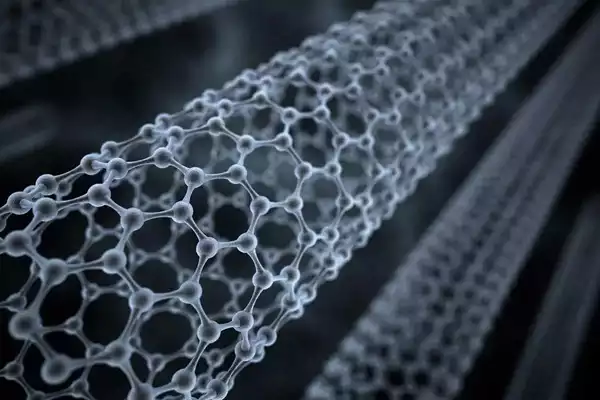A novel method for directly synthesizing Carbon nanotubes (CNTs) on glass substrates at a temperature of 750 °C could help energy research, biomedical fields, and optoelectronics.
- Institute of Advanced Study in Science and Technology (IASST), under the Department of Science and Technology (DST), developed this novel method
Issues with conventional synthesis methods:
- Carbon nanotubes (CNTs) have revolutionized technology with their exceptional properties, impacting fields such as energy research, biomedical applications, and optoelectronics.
- However, conventional synthesis methods pose challenges, necessitating innovation for cleaner and more sustainable approaches.
Challenges:
- High temperatures (~1000 °C) and metal catalysts (Fe, Co, Ni) are conventionally required for CNT synthesis.
- Biocompatibility concerns arise in biomedical applications due to the use of these catalysts.
- Removal of catalysts adds significant cost, urging the need for cleaner synthesis methods.
About the Novel method:
- Novel method for directly synthesizing CNTs on glass substrates at a lower temperature (750 °C).
- Utilizes Plasma Enhanced Chemical Vapour Deposition Technique (PECVD) with a specially designed spiral-shaped fused hollow cathode source.
- Spiral-shaped Fused Hollow Cathode Source is specially designed to generate plasma for the synthesis process.
- PECVD method negates the need for high temperatures and metal catalysts, addressing biocompatibility concerns.
Advantages:
- Conducted under atmospheric pressure, enhancing cost-effectiveness compared to traditional methods.
- Pre-plasma treatment of glass substrate at elevated temperatures enhances surface area, exposing more elements for catalysis.
- Sodium (Na) emerges as the primary catalyst for initiating CNT growth.
- Na in the grown CNTs can be easily removed by washing with deionized water.
Applications:
- Energy Research: Potential applications in rechargeable batteries and supercapacitors.
- Biomedical Fields: Addressing biocompatibility concerns, opening avenues for medical applications.
- Optoelectronics: CNTs suitable for transparent electrodes, touch screens, and flexible electronics.
About Carbon nanotubes (CNTs):
- Carbon nanotubes (CNTs) are cylindrical structures composed of carbon atoms arranged in a hexagonal lattice.
- They can be thought of as rolled-up sheets of graphene, which is a single layer of carbon atoms arranged in a hexagonal pattern.
- They are a subset of nanomaterials and exhibit unique mechanical, electrical, and thermal properties due to their structure.
- There are two main types of carbon nanotubes:
- Single-walled nanotubes (SWCNTs), consisting of a single cylindrical layer of carbon atoms.
- Multi-walled nanotubes (MWCNTs), which have multiple concentric layers.
Characteristics:
- Mechanical Strength: Carbon nanotubes are exceptionally strong and have high tensile strength.
- They are considered one of the strongest materials known, making them attractive for various structural applications.
- Electrical Conductivity: CNTs can be either metallic or semiconducting depending on their structure.
- Metallic SWCNTs exhibit excellent electrical conductivity, while semiconducting SWCNTs can be used in electronic devices.
- Thermal Conductivity: Carbon nanotubes have high thermal conductivity, making them suitable for applications in thermal management, such as in heat sinks and other electronic devices.
- Lightweight: CNTs are extremely lightweight, which adds to their appeal in various industries where weight reduction is crucial.
- Chemical Stability: Carbon nanotubes are chemically stable, which allows them to withstand harsh environments.
Applications:
- Electronics: CNTs can be used in the development of high-performance transistors, sensors, and other electronic components.
- Materials Science: They are incorporated into composite materials to enhance strength, conductivity, and other properties.
- Energy Storage: Carbon nanotubes are investigated for applications in batteries and supercapacitors due to their electrical properties.
- Medical and Biomedical: CNTs have potential applications in drug delivery, imaging, and biosensing.
- Aerospace: The lightweight and strong nature of carbon nanotubes make them suitable for aerospace applications, such as in the development of lightweight and strong materials for aircraft and spacecraft.
Ref: Source
| UPSC IAS Preparation Resources | |
| Current Affairs Analysis | Topperspedia |
| GS Shots | Simply Explained |
| Daily Flash Cards | Daily Quiz |



